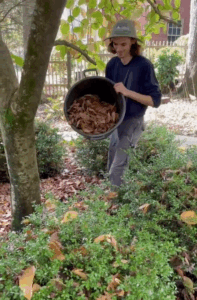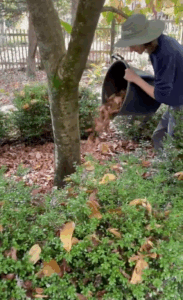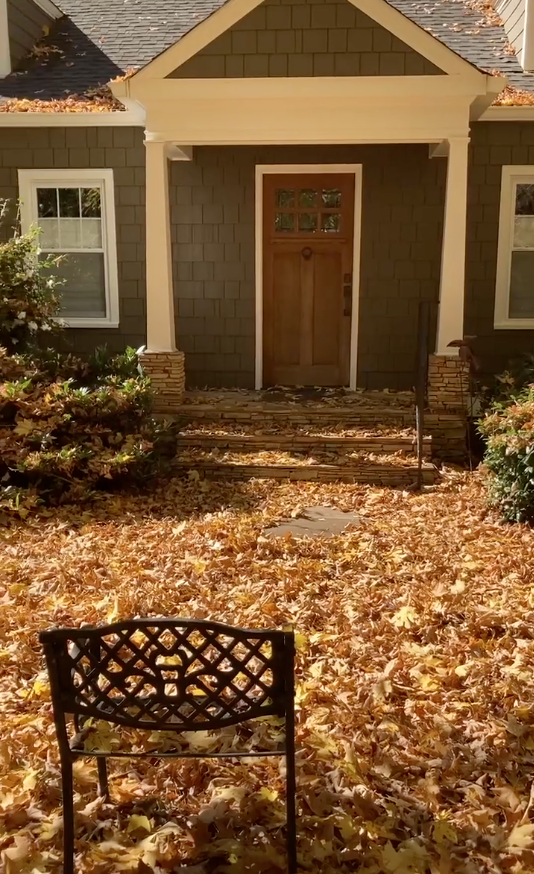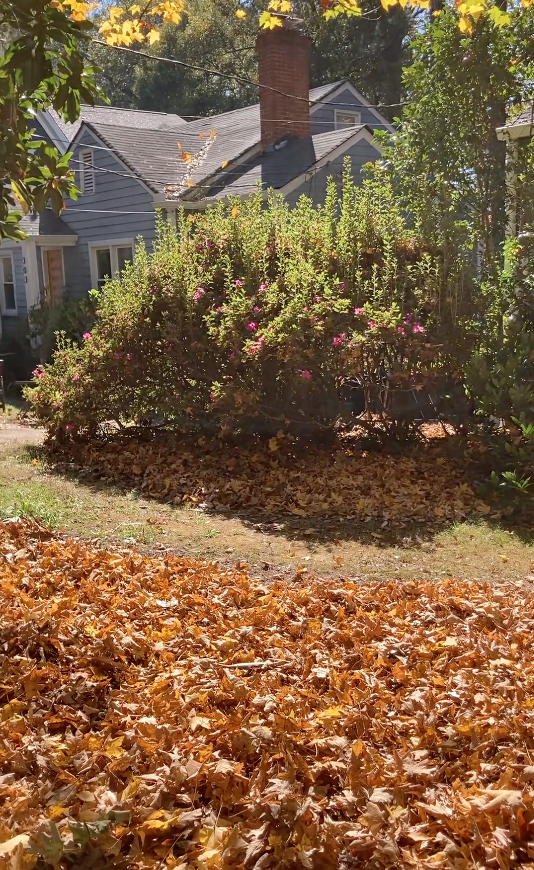Every fall, the same question rustles through our neighborhoods as the wind blows the first of those colorful changing leaves: What do we do with all these leaves?
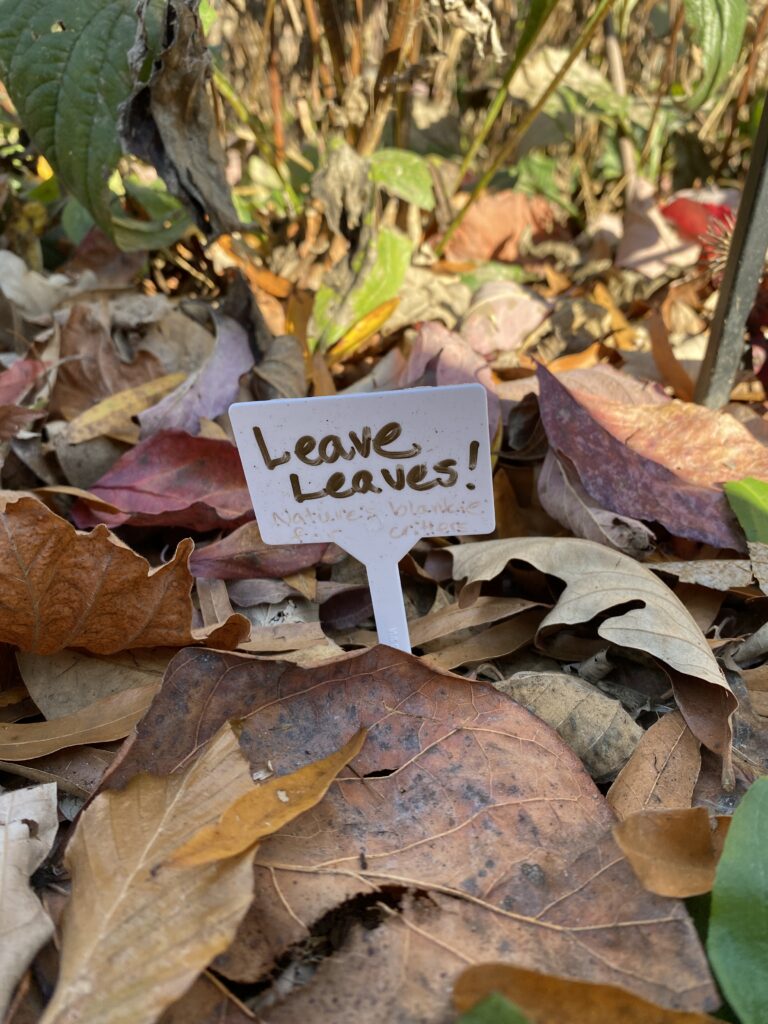
It’s a good question — and one worth pausing over. Because the way we answer it says a lot about how we see ourselves in relation to the natural world.
For decades, we’ve been trained to view fallen leaves as “yard waste.” Something to rake, bag, and haul away so our lawns can look neat and tidy again. But nature doesn’t operate that way. In the forest, there are no leaf blowers, no black plastic bags lined up at the curb. The leaves fall, decompose, and feed the soil that feeds the trees that drop the leaves again — a perfect, closed loop of nourishment.
At Shades of Green, we like to say that a healthy landscape mimics nature. So when we see leaves piling up this time of year, we see abundance, not mess.
Those layers of leaves are rich with organic matter, minerals, and life. They protect the soil from erosion, hold in moisture, and create habitat for countless beneficial insects and microbes. And as they break down, they form the most valuable substance on Earth for your garden: living, composted soil — the dark, spongy, living layer that supports everything from vegetables to trees.
So instead of fighting against nature’s process, we can work with it. Here are a few simple ways to mimic nature right in your own yard:
1. Leave the leaves where they fall — especially in garden beds and under trees. They’ll insulate roots and feed the soil.
In a forest, no one sweeps the floor. The fallen leaves stay put — creating a natural mulch layer that protects the soil, keeps roots insulated through the winter, and provides shelter for countless pollinators, toads, and beneficial insects. You can do the same in your own landscape. Let the leaves remain under trees, in shrub beds, and in perennial borders. In spring, they’ll break down into rich organic matter, feeding the soil and the plants that grew them.
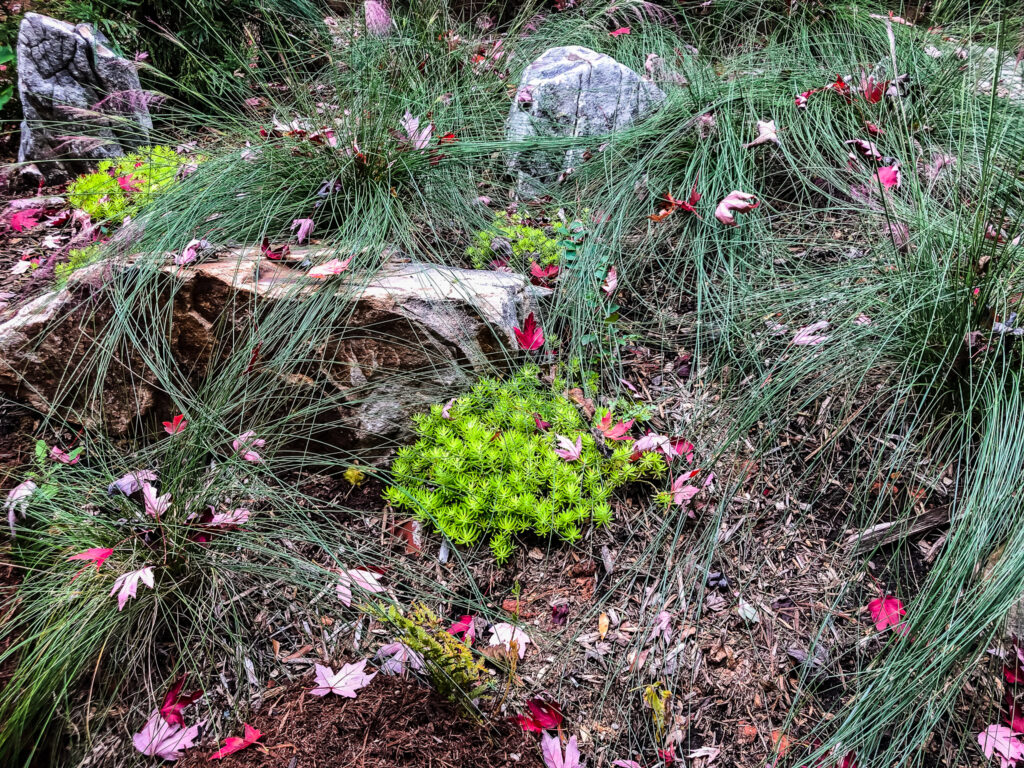
2. Mulch the leaves with a mower to create a thin layer on your lawn. This adds nutrients and improves soil health without smothering grass.
If your lawn is covered in a thick blanket of leaves, mowing them into smaller pieces is an easy way to mimic the forest floor’s recycling process — without smothering your grass. Use your mower’s mulch setting and go over the area a few times until the leaves are shredded fine enough to fall between the blades of grass. Over the winter, earthworms and microbes will pull those bits down into the soil, improving structure and fertility naturally.
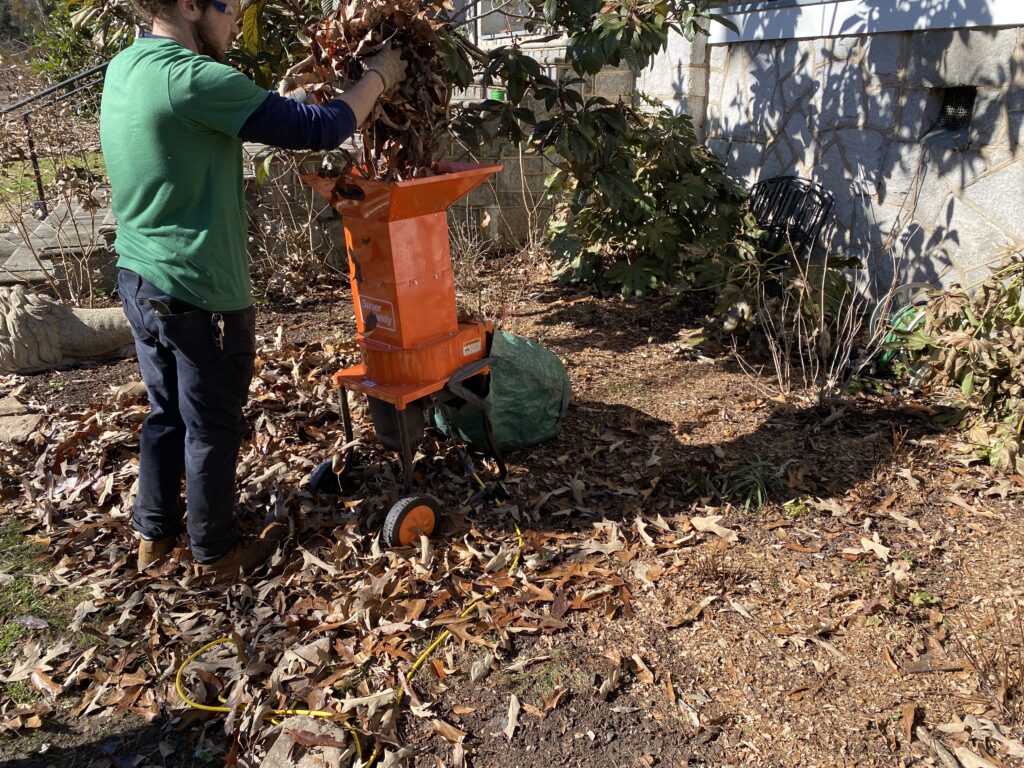
3. Create a leaf compost pile in a quiet corner of your yard. Over time, it will transform into rich, crumbly compost for next year’s planting.
Leaves are one of nature’s most abundant and free soil-building materials. Rake them into a pile in a corner of your yard or garden — ideally somewhere that stays a bit moist. You can layer them with green materials like grass clippings or kitchen scraps to speed decomposition. Over time, the pile will shrink and darken, turning into rich, crumbly compost you can use to top-dress garden beds or mix into potting soil next season.
4. Use leaves as mulch in vegetable or perennial beds to suppress weeds, retain moisture, and regulate soil temperature.
Spread a 2–3 inch layer of whole or shredded leaves around perennials, vegetables, or young trees. This natural mulch will suppress weeds, hold in moisture, and regulate soil temperature as the seasons shift. As it breaks down, it will feed the soil life below — building fertility without synthetic fertilizers.
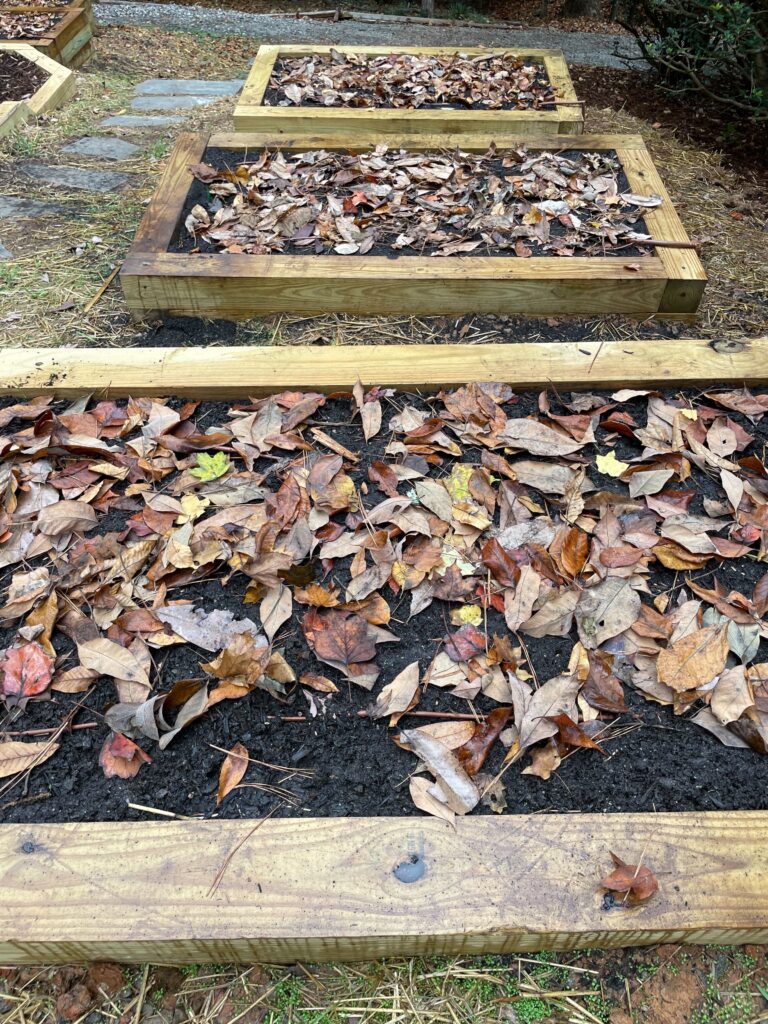
When we mimic nature, we reduce our workload and restore ecological balance. We shift from managing our landscapes to tending them — partnering with natural systems instead of trying to control them. Feel free to deep dive into practices like this and many other ways to invite regenerative landscaping into your garden by pre-ordering our book, The Complete Guide to Home Permaculture.
This fall, when you see those piles of leaves gathering at your feet, pause before you reach for the rake. Permaculture asks us to take cues from nature. The intelligence is already there, all we have to do is follow its lead.
If you’re inspired to care for your landscape in a way that mimics nature, but aren’t sure where to start, our Caretaking Services can help. Our services are designed to help you feel confident in reading and responding to your site, and to do the “heavy lifting” when needed. Whether you are hands-off and wanting help tending to you eco-paradise, or wanting to learn side-by-side with our team, we’re here to help your garden thrive!
👉 Book a Discovery Call to connect with our team and learn how we can help you nurture a living, evolving landscape that works in harmony with nature.
